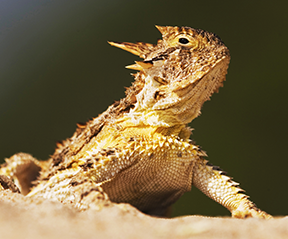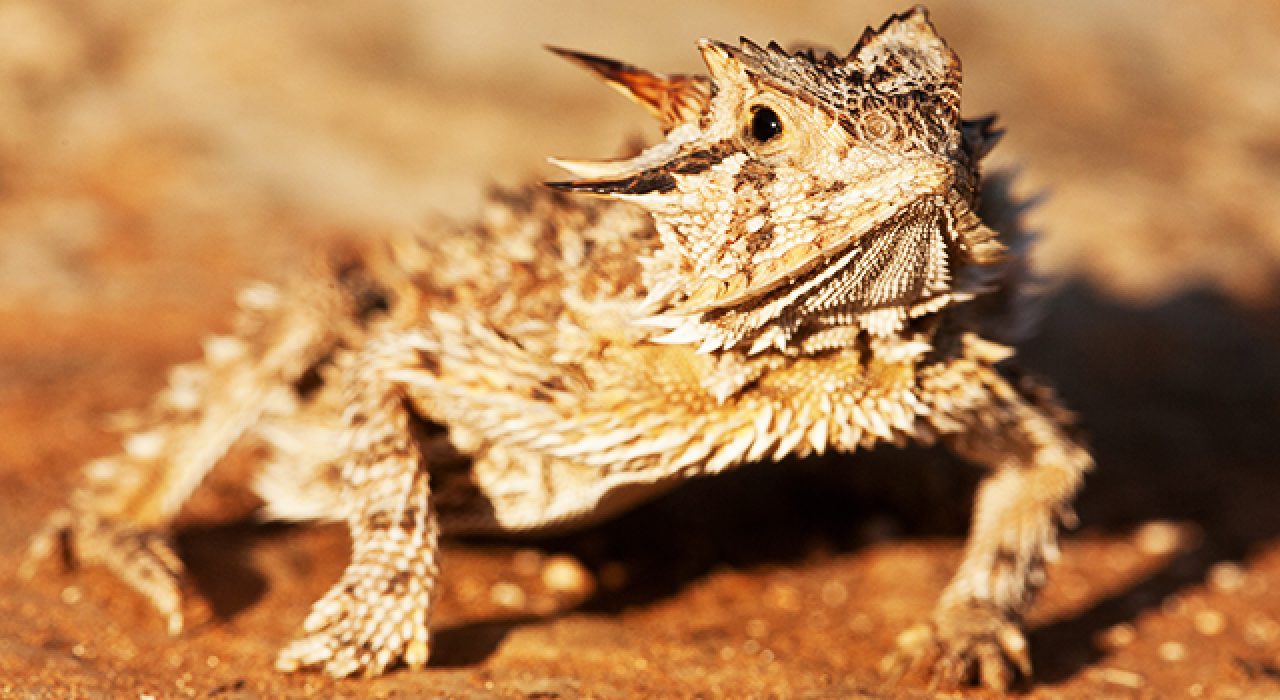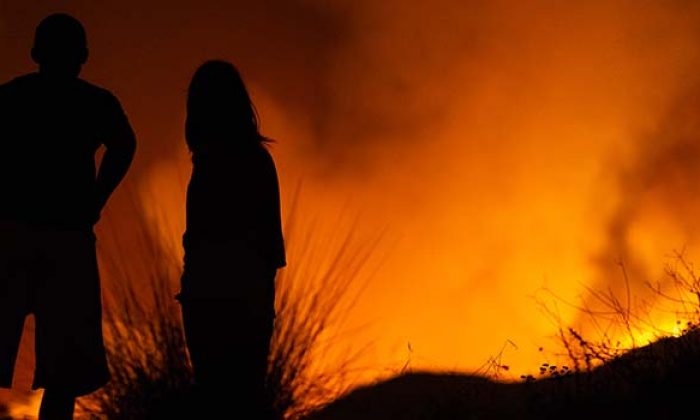APRIL 7, 2020 — The Texas horned lizard, one of the state’s well-loved creatures and the official state reptile, has seen a decline in numbers over the past few years, leading the state to classify it a threatened species.
To help with conservation efforts UTSA environmental science master’s student Jamie Killian is kicking off the South Texas Horned Lizard Project this spring within the Smith Lab of Avian Ecology in the Department of Environmental Science and Ecology.
“The Texas horned lizard is an animal that I remember playing with every summer as a kid. It’s just kind of a unique, cute, iconic Texas species,” said Killian, who also works full-time as a wildlife biologist for the Texas Parks and Wildlife Department. “I work with landowners in Karnes and Wilson counties and almost everyone asks me about horned lizards.”
“Jamie’s work is going to be impactful because it will not only help us understand why Texas horned lizards are declining but will also help inform conservation strategies.”
The Texas horned lizard, which can be found from the south-central U.S. to northern Mexico, is described as a fierce-looking lizard by Texas Parks and Wildlife. The reptile, also known as the “horny toad” has several horns on its body as well as fringed scales along its sides. They’re found in arid and semiarid habitats and are commonly found in loose sand loamy soils.
The Texas horned lizard’s decline in numbers is what piqued Killian’s interest.
 “The Texas horned lizard is [listed as threatened in Texas]. It’s not federally listed, but the populations are declining,” she said. “I’ve been interested in nongame species and threatened species, so I thought if there is an opportunity where I can potentially help or stabilize a species’ population, this one has a lot of support.”
“The Texas horned lizard is [listed as threatened in Texas]. It’s not federally listed, but the populations are declining,” she said. “I’ve been interested in nongame species and threatened species, so I thought if there is an opportunity where I can potentially help or stabilize a species’ population, this one has a lot of support.”
Starting in April, Killian plans to begin surveying five study sites—southeast of San Antonio in Karnes and Wilson counties—looking for the presence of Texas horned lizards in different habitat types.
“Texas Parks and Wildlife has developed some habitat classifications for lizards, so I will survey in each of those habitats,” she said. “There are five classifications and they’re represented across those study sites. I will use visual encounter surveys that consist of 60-meter transects that I will walk and count all the horned lizards I see. I’ll also count predators if I see them along the transects as well as fresh lizard scat.”
Killian will also seek input from the community through the project’s community science component.
“Because I know that detectability or the chances of spotting Texas horned lizards can be difficult—they blend in really well—I wanted to increase my odds of figuring out where they’re at in the county,” she said. “I’m soliciting people to report sightings to iNaturalist. They simply upload a geo-reference photo that has the time on it and I can confirm that identification with the photo.”
South Texas Horned Lizard Project
With the data collected Killian wants to figure out if the reptiles are found in each habitat classification and if there is a correlation between the abundance of lizards and the habitat classification.
“Are they found equally distributed across all five? Are they found more in habitat 2 and 1? Is there a relationship there?” she described. “I’ll also do a habitat assessment for each of those classifications to see if there’s a relationship there.
Killian hopes to make it a long-term project with the idea of taking the community component statewide and potentially guiding future conservation efforts.
“A lot of people are interested in iNaturalist because everyone has a smartphone. It’s a very simple way to get good data and see where the animals occur on a broader scale,” she said. “You can then look at those locations and get a feel for which habitat classifications they occur in more frequently and then from that you could maybe determine something about that habitat that makes it better or not as good for the lizard.”
Jennifer Smith, an assistant professor in the Department of Environmental Science and Ecology and founder of the Smith Lab of Avian Ecology, believes Killian’s work could potentially be critical for the Texas reptile.
“Jamie’s work is going to be impactful because it will not only help us understand why Texas horned lizards are declining but will also help inform conservation strategies. This information will go to all kinds of stakeholders from landowners to Texas Parks and Wildlife,” Smith said.
This spring will be Killian’s first surveying season for the two-year project.
“I plan on going every weekend until I complete it, but if something happens—if there’s a weather delay or I can’t get out and survey for some reason—then it may prolong it,” she said. “They’re reptiles so they are active March through September. I have a good window to do it, but I think it should take me until May or first of June. Afterward, I can start running my models after the first season and then really figure things out for next spring.”



